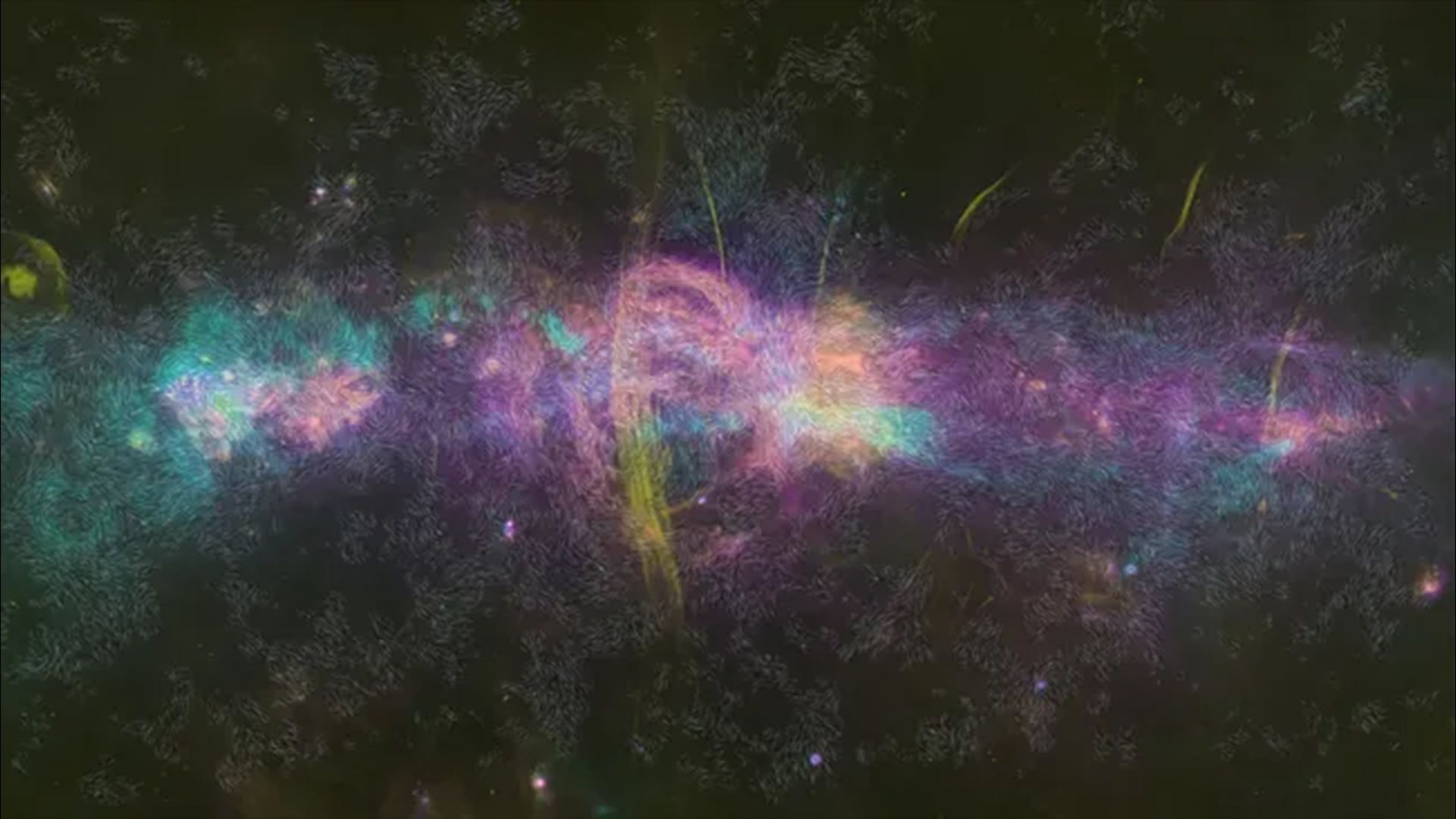Follow us on Google News (click on ☆)
At the core of our galaxy lies the Central Molecular Zone, a dense reservoir of dust reaching 60 million solar masses and displaying a temperature close to -432 degrees Fahrenheit (-258.2 degrees Celsius). This dust is crucial, as it forms the foundation of stars, planets, and, by extension, life as we know it. The interaction between magnetic fields and this dust is vital for understanding not only the Milky Way but other galaxies as well.

A novel view of the magnetic fields at the center of the Milky Way.
Credit: Villanova University/Paré, Karpovich, Chuss (PI)
To unravel these mysteries, researchers used the SOFIA telescope, installed aboard a Boeing 747 flying at over 45,000 feet (about 13,700 meters). This project, named FIREPLACE, resulted in the creation of an infrared map detailing approximately 500 light-years at the center of our galaxy. This map reveals a complex interaction between the cold dust, visible in blue, and magnetic fields, indicated by filaments emitting radio waves in yellow.
This exploration has helped to detect variations in the orientation of magnetic fields across dust clouds, offering a first glimpse of their complex arrangement. This discovery marks a significant step forward, although researchers acknowledge that the road ahead remains long to fully decipher the mysteries of the Milky Way's heart.
The data collected raise new questions about how magnetic fields interact with dust on a large scale in the galaxy, offering clues about the potential link between magnetic fields observed at different scales. Researchers hope that this information will encourage theorists to propose new models to explain these complex dynamics.

A tri-color view of the Central Molecular Zone (CMZ) showing the MeerKAT 20 cm (1 GHz) radio emission in yellow (Heywood et al., 2022) and the cold dust emission at 250 µm and hot dust at 70 µm observed by Herschel in cyan and purple (Molinari et al., 2011). The dashed green frame approximately indicates the region covered by the FIREPLACE DR1 observations presented in Butterfield et al. (2023). The main molecular clouds of the CMZ are marked and identified.
The implications of this study extend beyond our mere understanding of the Milky Way, opening windows onto the fundamental processes governing the formation and evolution of galaxies.